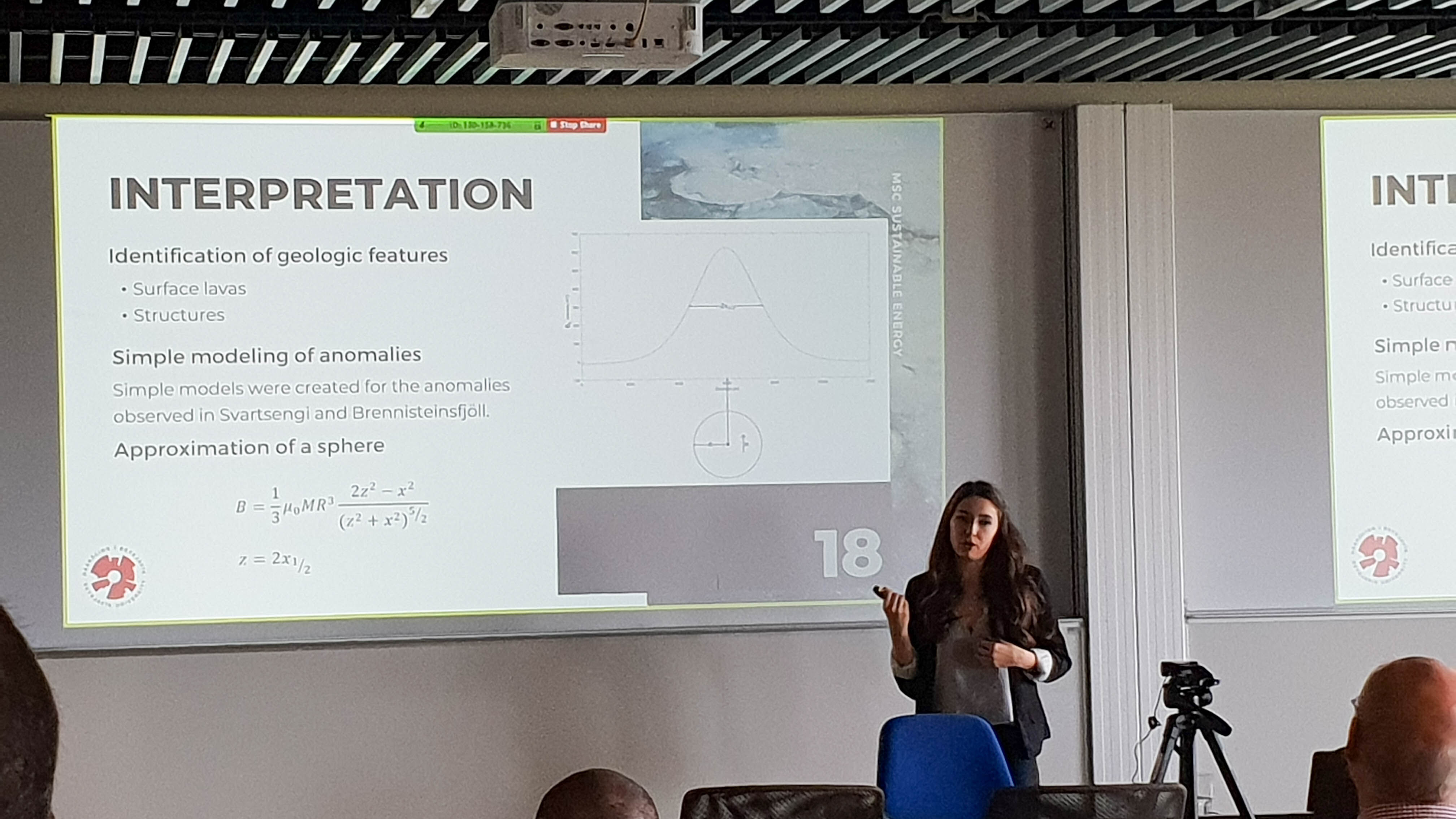MSc Thesis: A comparative analysis of the magnetic anomalies associated with the geothermal systems on Reykjanes peninsula
REYKJAVIK, September 11 - MSc in Sustainable Energy candidate, Jillian Mary Verbeurgt, successfully defended her master's thesis where she performed a comparative analysis of the magnetic anomalies associated with the geothermal systems on the Reykjanes peninsula. Jillian's research was supervised by Haraldur Auðunsson from Reykjavik University.

Setting the context for her research, Jillian highlights that extensive aeromagnetic surveying was initiated by Þorbjörn Sigurgeirsson in 1968. As she explains, this aeromagnetic data revealed a normally polarised band on the Reykjanes peninsula, formed during the Brunhes chron, with reversely polarised bands on each side, formed during the Matuyama chron. The rocks from the Brunhes chron contain negative magnetic anomalies within positively magnetized fissured swarms. These anomalies have been speculated to be due to shallow structures like buried hyaloclastite formations or high temperature activity destroying magnetite.
For her research, Jillian collected surface magnetic data for four of the geothermal systems on the peninsula, including Reykjanes, Eldvörp, Svartsengi, and Brennisteinsfjöll. This data was filtered through upward continuation to remove the noise due to surface lavas. She then analysed the surface profiles. In particular, she performed a comparative analysis of surface magnetic data for the geothermal systems on the Reykjanes peninsula to identify similarities of the systems. These were also compared to the existing geological, aeromagnetic, and resistivity data for the area.
From the surface magnetic data Jillian found that two of the areas showed magnetic lows where geothermal activity was observed with intensities ranging from 670 to 1700 nT. She created simple models for these two areas to determine the contrast in magnetisation due to geothermal activity. Her models were based off a simple sphere. She then used resistivity data to determine the depth to the top of the sources. She determined the radii for the spherical models by subtracting the top of the source from the depth to the center of the source. She found them to be just over 2000 m for Svartsengi and just over 1500 m for Brennisteinsfjöll. Jillian found that her models for Svartsengi and Brennisteinsfjöll showed a decreased magnetisation between 2.5 and 8.5 A/m, but that the surface survey data for the Eldvörp area did not show a significant magnetic anomaly. As Jillian adds, most of the surveying for Eldvörp and Reykjanes included shorth profiles that better show short wavelength anomalies. Further, the anomalies observed in the surface magnetics were consistent with the resistivity and aeromagnetic data for each area.
Jillian cautions that there are limitations in surface magnetic surveying due to the noise incurred due to the surface lavas. In her research, she applied upward continuation to reduce some of this noise but notes that there is the possibility of losing meaningful data if too much noise reduction is applied. For future work, Jillian states that it would be useful to accommodate gridded data over the geothermal areas in interest so that 3D analysis could be performed. This would allow for a map showing the entire lateral extent to the anomaly. Jillian believes that a more complete picture could be gained from drill chip sampling and characterization of magnetic minerals would be useful in validating models.
Congratulations to Jillian for an excellent thesis project!
After completing her graduate studies at the Iceland School of Energy, Jillian Mary Verbeurgt went on to co-founded the Iceland-based startup, RVK GreenBytes, where she is presently the CTO for the company. RVK GreenBytes' aims to reduce the food waste in Reykjavík while increasing the profit margin for restaurants.
